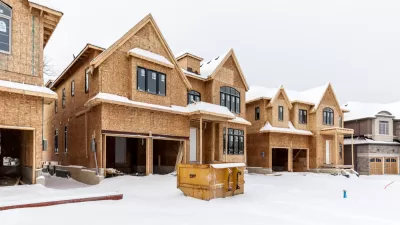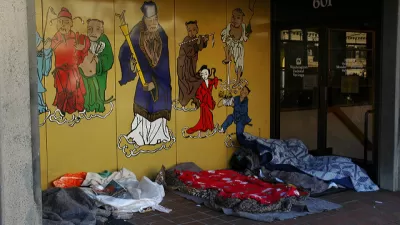A post examining common responses to the question of why the cost of housing continues to rise requires a frank discussion about the nature of Seattle's "housing shortage."

Michael Goldman asks a critical question, with relevance to other cities around the country, and eventually finds an answer that many pro-housing advocates might not like: "Why do Seattle rents continue to rise to higher and higher levels of unaffordability?"
Goldman notes a narrative that is used more and more frequently in the city to explain the lack of affordable housing: a housing shortage. "The housing shortage narrative has largely replaced the language of supply-and-demand, which has recently been criticized for being too reminiscent of trickle-down economics or too simplistic (although some still favor it)," writes Goldman.
The differences between the two lines of argument, Goldman writes, are subtle: "The essence of the shortage argument is the same as the supply-and-demand argument, though. Simply, when the production of housing outpaces the demand for housing we have a housing surplus. When housing production falls behind demand we have a housing shortage."
Thus, Goldman begins the process of debunking the housing shortage narrative, specifically the typical claim about the regulatory causes of the high cost of housing: "upon closer examination, the housing shortage between 2010 to 2015 was not the result of restrictive local regulations but restrictive global capital."
Goldman also suggests a new narrative that might actually be more tractable: out of control rents. The high cost of rent, according to Goldman, is a specific housing shortage that isn't resolved by simply building more housing. "To address the specific shortage, it’s time we started looking at specific solutions including a progressive income tax, rent stabilization, and aggressively capturing the value concentrating in urban land so it can be funneled into affordable housing."
FULL STORY: What Housing Shortage?

Manufactured Crisis: Losing the Nation’s Largest Source of Unsubsidized Affordable Housing
Manufactured housing communities have long been an affordable housing option for millions of people living in the U.S., but that affordability is disappearing rapidly. How did we get here?

Americans May Be Stuck — But Why?
Americans are moving a lot less than they once did, and that is a problem. While Yoni Applebaum, in his highly-publicized article Stuck, gets the reasons badly wrong, it's still important to ask: why are we moving so much less than before?

Using Old Oil and Gas Wells for Green Energy Storage
Penn State researchers have found that repurposing abandoned oil and gas wells for geothermal-assisted compressed-air energy storage can boost efficiency, reduce environmental risks, and support clean energy and job transitions.

Minneapolis Bans Rent-Setting Software
Four cities have enacted restrictions on algorithmic software that can inflate rent costs.

Oakland to Add 244 New EV Chargers
Oakland plans to launch its new charging network at eight locations by the end of 2025.

Jane Goodall Inspires with Message of Hope, Resilience, and Environmental Action
Speaking in Pasadena, Jane Goodall offered a hopeful and inspirational message, urging global compassion, environmental responsibility, and the power of individual action to shape a better future.
Urban Design for Planners 1: Software Tools
This six-course series explores essential urban design concepts using open source software and equips planners with the tools they need to participate fully in the urban design process.
Planning for Universal Design
Learn the tools for implementing Universal Design in planning regulations.
Heyer Gruel & Associates PA
City of Moreno Valley
Institute for Housing and Urban Development Studies (IHS)
City of Grandview
Harvard GSD Executive Education
Salt Lake City
NYU Wagner Graduate School of Public Service
City of Cambridge, Maryland





























